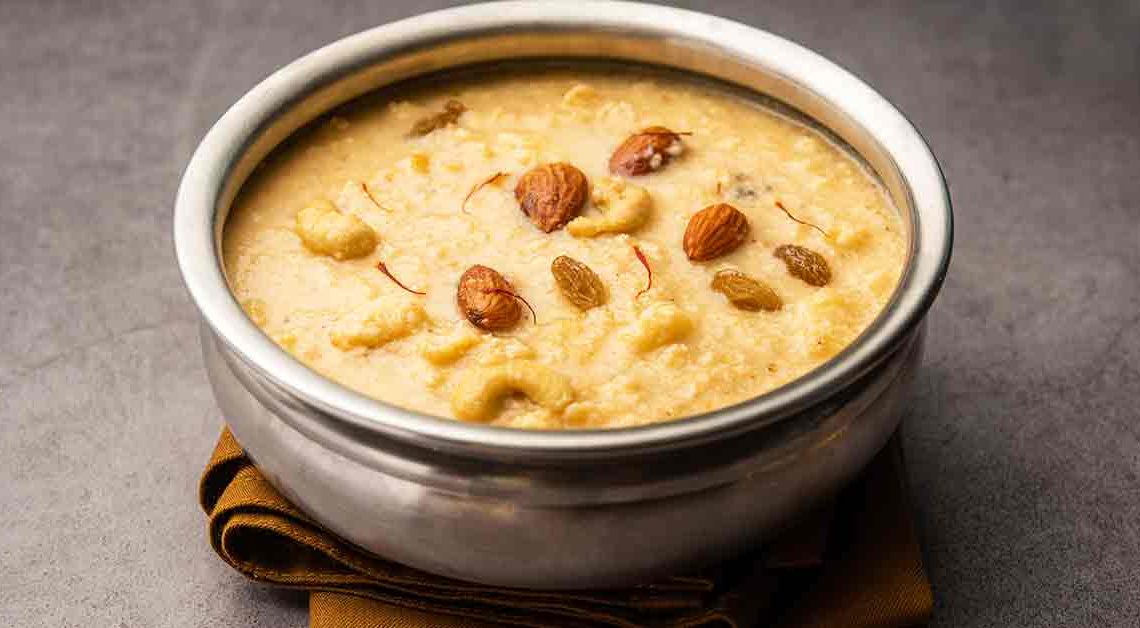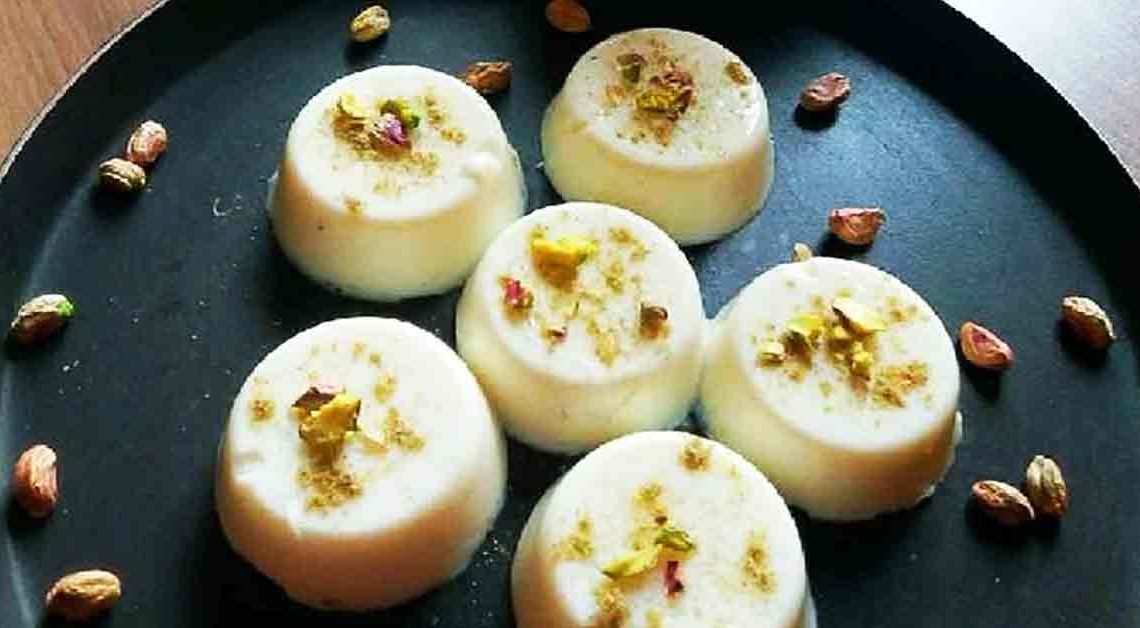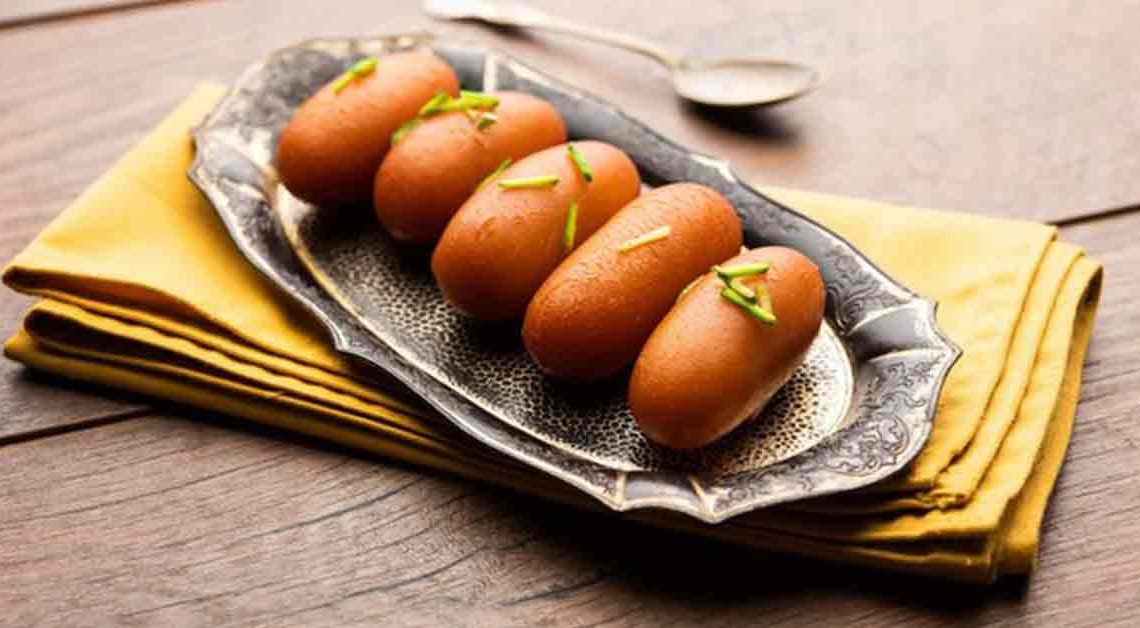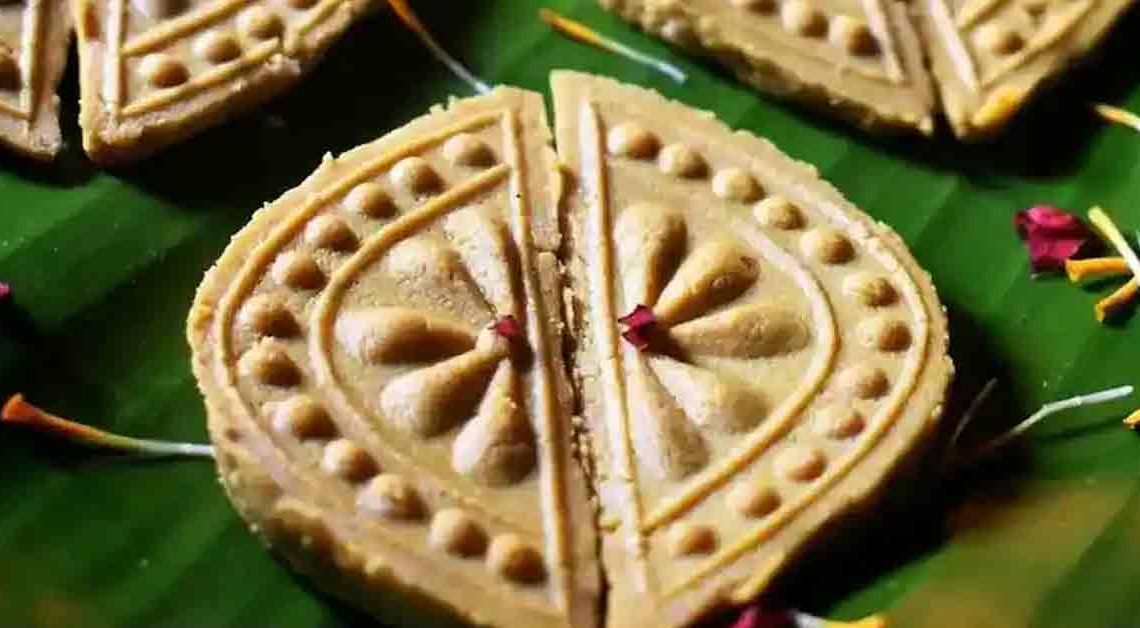A Divine Dessert Straight from Bengal’s Heart: Nolen Gurer Chanar Payesh

Welcome to a world of Mithainama where the fragrant aroma of jaggery mingles with the creamy richness of homemade cottage cheese, creating a dessert so heavenly that it’s often referred to as the “Ambrosia of Bengal.” Today, we embark on a culinary journey into the heart of West Bengal to unravel the secrets behind one of its most cherished sweet treats: Nolen Gurer Chanar Payesh.
Bengali cuisine is celebrated for its exceptional sweets, and it is a testament to the culinary artistry that this region is renowned for. This dessert is not just a dish; it’s a celebration of life, love, and culture.
Imagine a velvety-smooth, cream-colored dessert adorned with golden droplets of molten jaggery, delicately spiced with aromatic cardamom, and generously dotted with chunks of fresh, luscious cottage cheese. Each spoonful is a symphony of flavors and textures that dance on your taste buds, creating a harmonious blend of sweetness and richness.
Join us on this delightful adventure as we learn the steps, uncover the stories, and embrace the flavors of pudding—an iconic dessert that captures the heart and soul of Bengal. Get ready to fall in love with the irresistible charm of this sweet masterpiece. Let’s dive in!
Origin of Nolen Gurer Chanar Payesh
Nolen Gurer Chanar Payesh, a delectable Bengali dessert, finds its roots in the rich culinary heritage of West Bengal, India. This heavenly creation marries the flavors of two quintessential ingredients: chana (cottage cheese) and nolen gur (date palm jaggery).
The tradition of making Chanar Payesh dates back centuries, with its origins intertwined with Bengali culture and festivals. It is believed to have evolved from the early practice of making plain chana (homemade cottage cheese) and sweetening it with jaggery. Over time, this simple concoction transformed into a sophisticated dessert known as Chanar Payesh.
It is often prepared during special occasions, festivals like Durga Puja, and winter months when the date palm jaggery is in abundance. The labor-intensive process of curdling milk, extracting cottage cheese, and incorporating the nolen gur creates a dessert that embodies the warmth and love of Bengali hospitality, making it a treasured part of Bengal’s culinary heritage.
History of Nolen Gurer Chanar Payesh
The story begins with the ancient practice of curdling milk to make cottage cheese, known as chana in Bengali cuisine. Early renditions of Chanar Payesh involved sweetening this chana with various ingredients like honey or other sweeteners. However, it was the advent of date palm jaggery, or nolen gur, that transformed this dessert into the iconic creation it is today.
Nolen gur, prized for its unique smoky-sweet flavor and deep, earthy notes, became a seasonal delicacy in Bengal. This natural sweetener, extracted from the sap of date palm trees during the winter months, was incorporated into Chanar Payesh to enhance its taste and fragrance. This innovation elevated the dessert, making it a symbol of Bengali culture and tradition.
Over the years, the art of making it has been lovingly passed down through generations, with each family adding its unique touch. The dish has become an integral part of Bengali festivals and celebrations, especially during Durga Puja, where it symbolizes the warmth of hospitality and the essence of Bengal’s rich culinary heritage.
Cultural Significance
It holds a profound cultural significance in the culinary tapestry of West Bengal, India. This beloved dessert is not merely a sweet treat; it embodies the heart and soul of Bengali culture in several ways:
Festive Traditions: It is an integral part of Bengali festivals, especially during Durga Puja, the region’s most celebrated event. It is offered as bhog (an offering to the goddess) and served in community pandals (temporary temples). This tradition underscores the dessert’s role in spiritual and communal bonding.
Cultural Identity: This dessert is a source of pride for Bengalis, representing their rich culinary heritage and showcasing the uniqueness of Bengali sweets. It is a symbol of Bengali identity and is often shared with great pride with visitors and guests.
Sensory Experience: The aroma and taste evoke a sense of nostalgia and comfort for Bengalis. It triggers memories of home, family, and cherished moments, making it an emotionally resonant dish.
Where is Nolen Gurer Chanar Payesh Famous?
This dessert is particularly famous during Bengali festivals like Durga Puja, Diwali, and Makar Sankranti when it is prepared and shared as a symbol of celebration and tradition.
It is not limited to urban centers but is equally popular in rural areas of West Bengal, where it is often made with fresh, locally sourced ingredients.
Bengali communities living outside West Bengal, in places like other parts of India, Bangladesh, and around the world, also cherish payesh as a way to maintain their culinary traditions and cultural identity.
While payesh is most famous in West Bengal, its reputation has spread beyond the region due to the global diaspora of Bengali communities and the increasing interest in diverse and authentic Indian cuisines.
Interesting Facts and Trivia
Nolen Gurer Chanar Payesh is a dessert deeply embedded in Bengali culture and culinary traditions. Here are some interesting facts and trivia related to this delightful sweet treat:
- This is a seasonal dessert, primarily enjoyed during the winter months when date palm jaggery (nolen gur) is freshly harvested. Its availability is limited to this time of the year, adding to its allure.
- Preparing this dessert is a labor-intensive process. Cottage cheese (chana) is made from scratch by curdling milk, and date palm jaggery is carefully melted to achieve the perfect consistency. This dedication reflects the love and respect Bengalis have for their culinary heritage.
- This dessert is considered an embodiment of Bengali tradition and hospitality. It is often shared with guests as a gesture of warmth and welcome.
- It is not just delicious; it also has nutritional benefits. Cottage cheese is a good source of protein and calcium, while date palm jaggery contains essential minerals like iron and potassium.
- While it can be found in sweet shops, many Bengalis prefer homemade over the commercial versions, as it allows for customization and a personal touch.
Did You Know?
Did you know that indulging in a bowl of Nolen Gurer Chanar Payesh offers not only a delightful culinary experience but also a range of health benefits?
- The cottage cheese (chana) used in it is an excellent source of protein. Protein is essential for building and repairing tissues, supporting muscle health, and overall bodily functions.
- Cottage cheese is also rich in calcium, aiding in maintaining strong bones and teeth, and supporting heart and muscle functions.
- Date palm jaggery (nolen gur) used in this dessert contains iron, which helps prevent anemia and supports the production of red blood cells.
- Date palm jaggery is a source of essential minerals like potassium, magnesium, and phosphorus, contributing to better nerve function, muscle health, and overall well-being.
- Jaggery is known for its antioxidant properties, helping combat harmful free radicals in the body and promoting better skin health.







